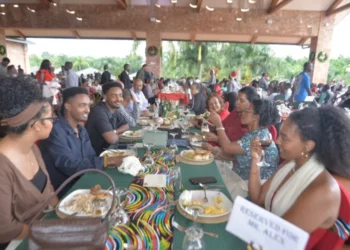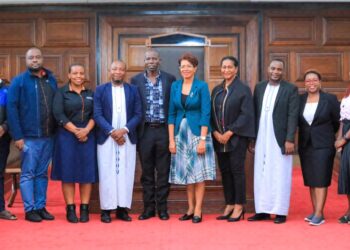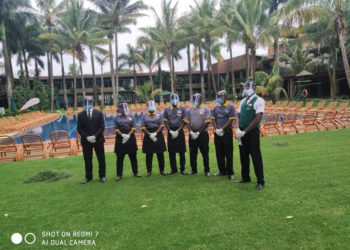By Mike Ssegawa
I have visited the Uganda Museum in Kamwokya for more than 20 times. Okay. I don’t even know how many times. What I know is few Ugandans have checked in the reservoir of Uganda’s history more than I have.
If I was not a journalist, however, I could never have visited this place more than twice. Fact. The truth is – there’s little added to this museum to make one want to come back again and again.
Museums elsewhere are gems. They are places used to share history and pride. And with technology, it has been leveraged to preserve or tell stories of old that one can be taken back to the beautiful Stone Age era. Don’t ask anyone in Uganda about that yet. Whatever happened to our historians, anthropologists, collectors, archeologists, culturists!
Finally our museum comes to life
I am sure many people have not realized there is the Milk Exhibition open at the Uganda Museum since September 22. I need to assure you, the Milk Exhibition I have seen is worth your time. Forget the money.

I was skeptical when I heard about it from its coordinator Amon Mugume. If he didn’t insist, I would not see the surprise.
I heard about the Milk Exhibition early in September. Mugume asked me to report about it. I thought it was the usual stuff. I actually reached the Uganda Museum on the opening day and I did not make a tour. Instead, I ran to catch another appointment which I thought was more important to honour. I apologise.

Last week, I returned there. Of course I was dragging my feet.
“Where is the milk exhibition?” I asked the receptionist. The pleasant lady showed me the direction to the eastern corridor of the museum.
Two people, another lady and a young man stood at the point of entry of the exhibition. The young man didn’t introduce himself but he welcomed me to the Milk Exhibition. He offered to take me around. I came to learn his name was Christopher Ssebuyungo.

Chris, as I will call him in this article, is a calm young man, mindful of the fact that one needs to take their time to understand the exhibition in its proper context.
He showed me photographs hanging on the wall at the place the exhibition starts. “Those were preparation meetings many months before this exhibition. It is the backstory to what you are going to see. In the photos are staff of the Uganda Museum, Igongo cultural centre and the Ethnographic Museum of Zurich. It is these members who went around the Ugandan cattle corridors talking to the pastoralists and animals keepers to document their milk culture. They also went to Switzerland to do the same.

At the start of the exhibition are two horns, remains of cattle picked from Ntuusi in Sembabule district. Chris tells me that cattle keeping has been in this area for more than a millennium.
The horns actually are said to be 1000-1400AD. This must be the period of the Bachwezi, before Bunyoro-Kitara took over this area, which laid a background to the kingdoms the White man found in present day Uganda.

The Bachwezi people have for long been associated with cattle keeping. One of the historical landmark attributed to them in Ntuusi and Bigo bya Mugwenyi are just poorly tended but they could be important historical places in Uganda. At the milk exhibition, you will see cattle horns older than any existing Ugandan society.

The Ankole hut follows. The Ankole and Karimojong people are notoriously cattle keepers and they make the bulk of knowledge shared in this exhibition in terms of their milk culture as well as how they took care of their animals. The Nkole hut at the beginning of the exhibition depicts the living area of a typical pastoralist household.

Most prominent in this area is the platform where traditional milk utensils are kept. There is a wonderful lady, Joviah, who takes visitors through what transpires in this living area. She explained to me what and how the omugyegye (the platform) is managed. From the pots and calabashes used to milk and drink the milk, as well as what is used to clean, smoke and preserve the milk. She emphasized that cleanliness what key in the milk management.

As you walk through the exhibition, the story is told using photographs, actual cattle and milk artifacts as well as modern multimedia techniques of storytelling such as use of videos and posters. In the videos you can see how milking and ghee making is done in Uganda and Switzerland, particularly among the Nkole and Pokot communities.
At the end of the exhibition, you are able to see today’s milk products vis-à-vis the traditional ones. The milk products including long shelf life products as well as chocolate and yoghurt and butter, are exhibited.

This is not just my personal opinion. I saw many people mesmerized upon visiting this place. Several people I spoke to told me they were amazed at the ingenuity used in telling the story of milk traditions and modern practices in Uganda and Switzerland. “They have been brought to life,” said Annette Turyagenda, one of the visitors.
One needs about one hour to walk to complete a tour of this exhibition made possible by three partners; the Uganda Museum, Igongo Cultural Institute and the Ethnographic Museum of Zurich. The six months exhibition was funded by the Lottery Fund of Zurich.
Do you have a story in your community or an opinion to share with us: Email us at editorial@watchdoguganda.com











